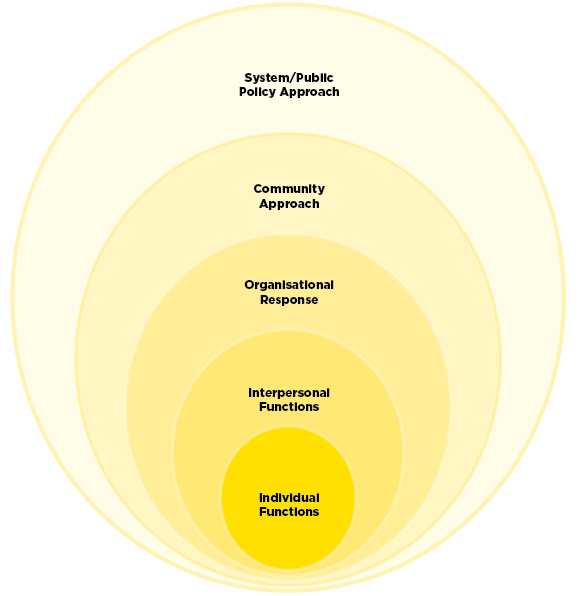Approaches
The Safe System Approach
The Safe System approach adopts a holistic view of the road transport system and the interactions between people, vehicles, and the road environment.
It recognises that people will always make mistakes and may have road crashes – but those crashes should not result in death or serious injury.
The Safe System model is regarded as international best practice and is the framework for improving road safety across Australia. “Safe System” is the Australian terminology for a philosophy shared by different practices in many different nations. It is built on several key principles:
- People make predictable mistakes that can lead to road crashes
- The human body has a limited physical ability to tolerate crash forces before harm occurs
- A shared responsibility exists amongst those who plan, design, build, manage and use roads and vehicles to prevent crashes resulting in serious injury or death
- All parts of the system must be strengthened to multiply their effects; and if one part fails, road users are still protected
There are four overarching pillars under the Safe System approach that influence road safety outcomes. These are safe road infrastructure, safe vehicles, safe speed at which people travel and safe road user behaviour.
Social Model Approach to Road Safety
South Australia’s Road Safety Strategy reflects and endeavours to strengthen the social model for road safety. The social model approach acknowledges the social systems which we live in and how individuals, organisations, government and community culture impact on road safety outcomes.
Core to its approach is a collaborative effort across private, not for profit and public sector agencies at the local, state and federal level. The social model also values the contribution of the broader South Australian community in achieving road safety outcomes and acknowledges that road safety is a complex issue that deserves and requires a complex strategy.
The social model approach has many benefits, including:
- positioning road safety as everyone’s business, reaching beyond traditional lines of responsibility (i.e. relevant across disciplines, not just the transport sector);
- increased capacity for action through shared ownership of the issue, leveraging on stakeholder networks and influence;
- cultural change towards road safety, leading to long term and self-sustained commitment and contribution to road safety as an inherent part of everyday life; and
- a model that is complementary to the Safe Systems approach to road safety
There are five layers under the social model.1

| Layer | Description | |
|---|---|---|
| 1 | System/Public Policy Approach | A systemic cross agency lens of how governmental policies, legislation and investments contribute to road safety outcomes. |
| 2 | Community Approach | This layer emphasises a grass root community led action. For example, a local sporting community promoting the use of a designated driver for after sports celebrations. |
| 3 | Organisational Response | Consideration for how organisations establish systems that support a culture of road safety. For example, establishing policies and procedures for safe travel of employees both in and outside of work hours. |
| 4 | Interpersonal Functions | A relationships driven approach to influencing an individual, organisation or sector to establish a culture of road safety. For example, supporting school leadership to establish a culture of road safety amongst the local parent community. |
| 5 | Individual Functions | This layer focuses on the attitudes and behaviours of the individual and how behaviours demonstrate taking responsibility for oneself. |

